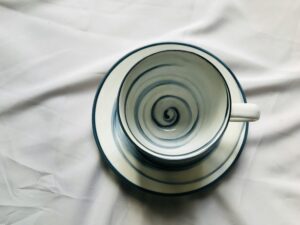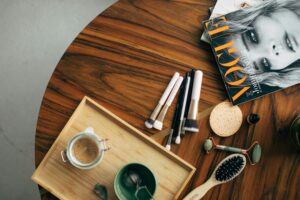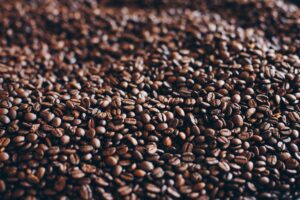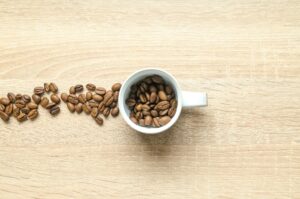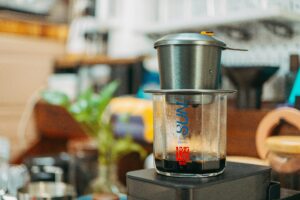There’s nothing quite like a perfectly brewed cup of coffee to start your day. While coffee shops offer expertly crafted beverages, you can achieve the same level of quality at home with the right techniques and tools. This guide will help you create barista-level coffee, covering everything from selecting the best beans to mastering the brewing process.
Table of Contents
Choosing the Right Coffee Beans
The foundation of a great cup of coffee lies in the quality of the beans. Always opt for freshly roasted, high-quality coffee beans to ensure maximum flavor and aroma. Look for beans with a roast date rather than an expiration date, as coffee is best consumed within two to four weeks of roasting.
Arabica vs. Robusta
Arabica beans are known for their smooth, complex flavors and lower bitterness, while Robusta beans have a stronger, more bitter taste with higher caffeine content. Many specialty coffee brands use 100% Arabica beans for a refined experience, but blends with Robusta can create a bolder flavor profile.
Single-Origin vs. Blends
Single-origin coffee comes from a specific region, offering distinct flavors that reflect the local climate and soil. Blends combine beans from multiple regions, creating balanced flavors that appeal to a wide audience. Experiment with both to find what suits your taste preferences.
Proper Coffee Storage
Once you have high-quality beans, proper storage is essential to maintain freshness. Keep coffee in an airtight container away from light, heat, and moisture. Avoid storing beans in the fridge or freezer, as they can absorb odors and lose their natural oils. Instead, store them in a cool, dark place like a pantry.
Grinding Your Coffee Beans
Grinding your beans just before brewing ensures maximum freshness and flavor. Different brewing methods require different grind sizes:
- Coarse Grind: Ideal for French press and cold brew.
- Medium Grind: Suitable for drip coffee makers and pour-over methods.
- Fine Grind: Best for espresso machines and AeroPress.
- Extra Fine Grind: Used for Turkish coffee.
A burr grinder is recommended over a blade grinder, as it produces a more consistent grind size, leading to better extraction.
Choosing the Right Water
Water makes up over 98% of a cup of coffee, so using high-quality water is crucial. Tap water with high mineral content can affect the taste, while distilled water lacks essential minerals that enhance flavor. Filtered water or bottled spring water is ideal for brewing.
Mastering the Brewing Methods
French Press
A French press is one of the easiest ways to brew rich and full-bodied coffee. Here’s how:
- Heat water to around 195–205°F.
- Add coarsely ground coffee (1:15 coffee-to-water ratio).
- Pour hot water over the coffee and stir gently.
- Let it steep for 4 minutes.
- Press the plunger down slowly and pour.
Pour-Over (Chemex or V60)
Pour-over brewing allows for precise control over extraction, producing a clean and flavorful cup.
- Heat water to 195–205°F.
- Place a filter in the dripper and rinse it with hot water.
- Add medium-ground coffee (about 1:16 coffee-to-water ratio).
- Slowly pour hot water in a circular motion, allowing the coffee to bloom.
- Continue pouring in stages, ensuring even saturation.
- Let it drain and enjoy.
Espresso Machine
Espresso requires precision and practice but yields a rich, concentrated shot of coffee.
- Use finely ground coffee.
- Tamp the coffee evenly into the portafilter.
- Brew with water at around 200°F under 9 bars of pressure.
- Extract for 25–30 seconds.
- Enjoy as is or use it as a base for lattes, cappuccinos, and more.
Moka Pot
A Moka pot produces a strong, espresso-like coffee on the stovetop.
- Fill the bottom chamber with hot water.
- Add fine to medium-ground coffee to the filter basket.
- Assemble the pot and place it on low heat.
- Wait for coffee to bubble up into the top chamber.
- Remove from heat and serve immediately.
Perfecting the Milk Frothing Technique
For those who love lattes and cappuccinos, frothing milk properly is essential.
- Using a Steam Wand: Position the wand just below the milk’s surface, introducing air until you hear a gentle hissing sound. Then, submerge it slightly and swirl to create a smooth microfoam.
- Using a Hand Frother: Heat the milk and froth it using a handheld frother or French press.
- Shaking in a Jar: If you don’t have tools, shake warm milk in a jar and let it settle.
Enhancing Your Coffee Experience
Experiment with Coffee-to-Water Ratios
The standard ratio is 1:16 (one part coffee to 16 parts water), but adjusting this can enhance your brew. A stronger cup may need a 1:14 ratio, while a lighter brew can go up to 1:18.
Maintain Your Equipment
Regularly clean your coffee maker, grinder, and other equipment to prevent the buildup of coffee oils and residue, which can affect taste.
Try Different Roasts and Brewing Styles
Experimenting with light, medium, and dark roasts, as well as different brewing methods, can help you find your perfect cup.
Add Flavor Naturally
Instead of artificial syrups, try adding natural ingredients like cinnamon, vanilla, or nutmeg to your grounds before brewing for subtle enhancements.
Conclusion
Making barista-quality coffee at home is an art that requires the right beans, proper grinding, precise brewing techniques, and attention to detail. By investing in quality ingredients and equipment, practicing different brewing methods, and refining your process, you can enjoy an exceptional cup of coffee every day without stepping into a cafe. Start experimenting today and discover your perfect homemade brew!

